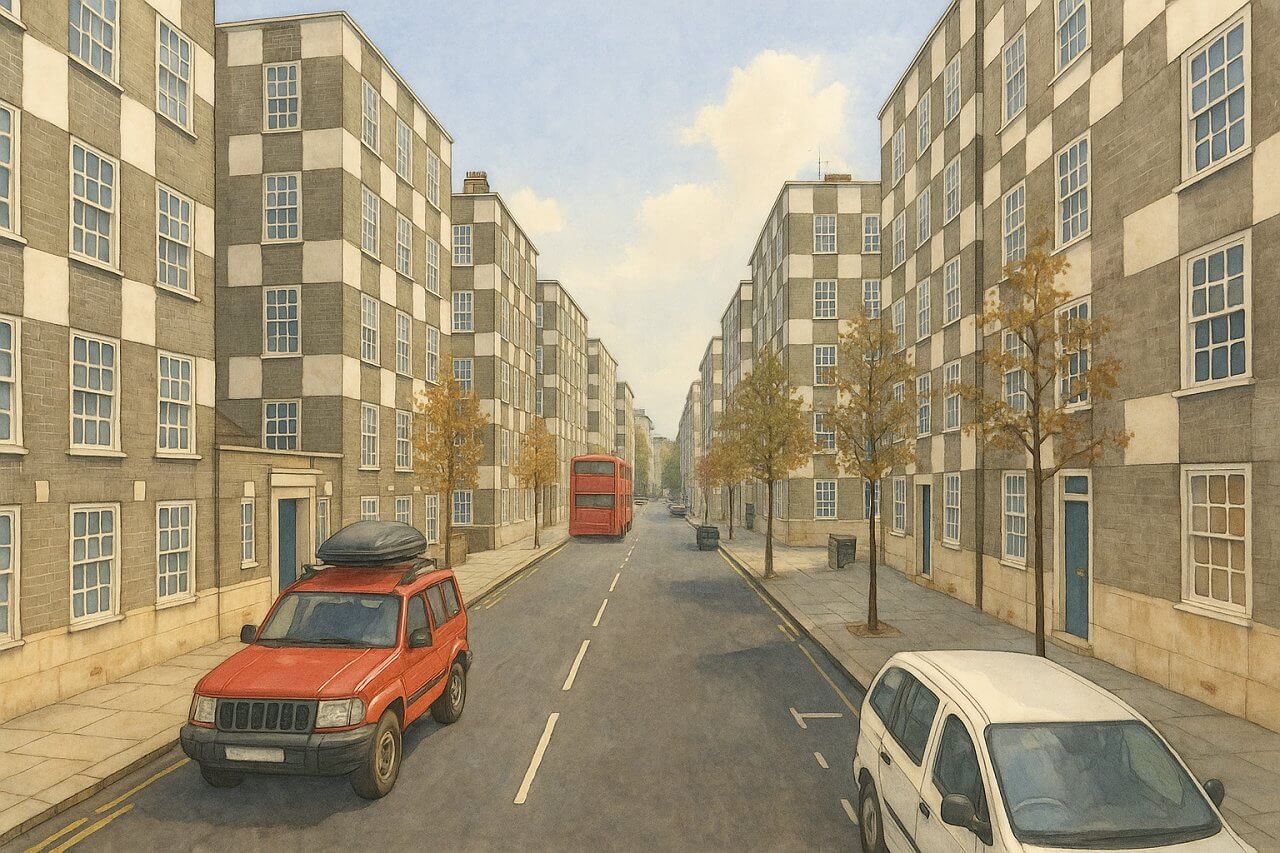
Page Street, London
Page Street, Westminster: From Industrial Past to Modern Living
Page Street is a residential street located in the heart of Westminster, in the City of Westminster, Central London. It runs in an east–west direction from Regency Street on its western end to the junction of Dean Ryle Street and John Islip Street on the eastern side. The street lies just south of Victoria Street and north of Horseferry Road, placing it within walking distance of iconic landmarks such as the Houses of Parliament and Westminster Abbey. It forms part of the well-connected Millbank Estate area.How Long is Page Street?
Page Street is approximately 0.2 miles long (roughly 320 metres). Although relatively short in length, it forms an important corridor in the local residential layout and is flanked by buildings of historical and architectural significance.The History of Page Street
The area around Page Street was historically low-lying marshland. In the 19th century, this part of Westminster became heavily industrialised and densely populated. Page Street itself was first laid out in the early 20th century, during a period of urban reform.Much of the current development along Page Street dates to the 1920s and 1930s. It became a focal point of social housing projects led by the London County Council (LCC), aiming to improve conditions in overcrowded slums. Architecturally, the street is noted for its early examples of municipal housing, including work by noted architect Sir Edwin Lutyens, whose flats along the eastern end of the street were completed in 1928.
Origin of the Name 'Page Street'
Page Street is believed to be named after William Page, a local landowner and property developer active in the 19th century. Although documentation is sparse, it's likely that the name was formalised around the time the street was first planned and laid out in the late 1800s or early 1900s.Streets and Roads That Connect to Page Street
Page Street connects to several other roads in Westminster:- Regency Street – a residential and commercial street on its western end.
- Marsham Street – a key north–south thoroughfare intersecting Page Street.
- Dean Ryle Street – forms part of the eastern junction.
- John Islip Street – also connects at the eastern end and leads south toward the River Thames.
Real Estate Prices on Page Street (As of April 2025)
Page Street remains relatively affordable compared to prime Westminster locations such as St James’s or Belgravia, yet prices have risen steadily in recent years.As of April 2025:
- Two-bedroom flats (~700 sq ft / 65 sq m) sell for approximately £700,000 to £800,000.
- Larger three-bedroom flats (~900 sq ft / 84 sq m) range from £850,000 to £950,000.
Most properties on Page Street are in former council blocks or early 20th-century housing projects, making them more spacious than modern developments yet more affordable.
The Character of Page Street
Page Street is predominantly residential in character. The street is lined with low- to mid-rise blocks of flats, many of which were constructed as part of social housing initiatives. Despite its utilitarian roots, the street has a quiet, almost village-like atmosphere, with occasional local shops and amenities nearby.There are no major commercial or industrial establishments on Page Street, though government offices and cultural sites are just a short walk away.
Nearest Underground Stations and Transport Links
Page Street enjoys excellent transport connectivity. The nearest London Underground stations are:- Pimlico Station – on the Victoria Line, approximately 10 minutes' walk.
- St James’s Park Station – on the District and Circle Lines, around 10 minutes’ walk to the north.
- Westminster Station – on the Jubilee, District, and Circle Lines, roughly 12 minutes away by foot.
A Fun Fact About Page Street
A lesser-known architectural gem on Page Street is the block designed by Sir Edwin Lutyens in the late 1920s. Known for his stately homes and war memorials (including the Cenotaph on Whitehall), Lutyens applied his skills to social housing here, producing elegant, brick-built flats with decorative geometric patterns and detailed brickwork—considered one of the finest examples of early municipal architecture in London.These buildings were designated as Grade II-listed by Historic England, preserving their unique character and design for future generations.
Quick Facts About Page Street
Location: Westminster, City of Westminster, London
Length: Approx. 0.2 miles (320 metres)
First Developed: Early 20th century
Named After: William Page, landowner (19th century)
Main Connections: Regency Street, Marsham Street, Dean Ryle Street, John Islip Street
Character: Residential
Nearest Tube Stations: Pimlico (Victoria), St James's Park (District, Circle), Westminster (Jubilee, District, Circle)
Average Property Price (2025): £700,000–£950,000
Fun Fact: Features municipal flats designed by Sir Edwin Lutyens, now Grade II-listed
Length: Approx. 0.2 miles (320 metres)
First Developed: Early 20th century
Named After: William Page, landowner (19th century)
Main Connections: Regency Street, Marsham Street, Dean Ryle Street, John Islip Street
Character: Residential
Nearest Tube Stations: Pimlico (Victoria), St James's Park (District, Circle), Westminster (Jubilee, District, Circle)
Average Property Price (2025): £700,000–£950,000
Fun Fact: Features municipal flats designed by Sir Edwin Lutyens, now Grade II-listed
Map of Page Street, London

Painting of Page Street, London (View image in full size)